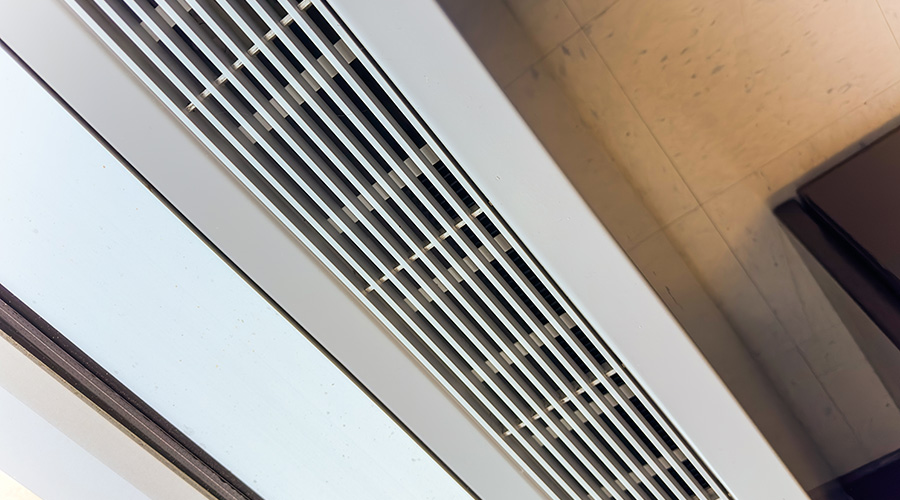Now Is the Time to Prioritize Indoor Environmental Quality
LEED credits that support health and well-being encourage optimization of the indoor environment while minimizing impact on the outdoor environment and global resources.
As stay-at-home and social distancing guidelines have kept many Americans confined to certain spaces and areas, strategies that promote healthy indoor environments have become incredibly relevant and important for building teams to understand and consider.
While it is not a direct solution to the current public health crisis, green building strategies are an important part of supporting overall human health and ensuring a positive future for all. Protecting health and wellness is a clear goal for LEED and in fact, about two-thirds of the points in LEED v4.1 can relate to this objective. Building teams should also become familiar with the rating system’s Indoor Environmental Quality credit category, which assesses how well a building is performing for occupants with regards to indoor air quality and comfort.
LEED credits that support health and well-being encourage optimization of the indoor environment while minimizing impact on the outdoor environment and global resources.
Pay attention to outdoor air quality
Outside air quality conditions can influence the quality of indoor air and there are several resources, including Breathelife.org and AirNow.gov, that can advise on conditions in your community. These sites offer local air quality information including an Air Quality Index, forecasts, and pollutant details for ground-level ozone, particulates, carbon monoxide, sulfur dioxide, and nitrogen dioxide.
To better understand the quality of air coming into a building, managers can install air quality monitoring devices near or on a building. Armed with this information, building operators can dynamically manage their building’s systems to optimize energy efficiency, as well as indoor air quality. Some projects have even installed air cleaning devices for ozone that can be turned on when high outdoor ozone levels are detected. Accounting for outdoor air quality can help building teams tailor solutions that are locally and culturally relevant to their occupants.
Air quality testing and monitoring
The air in buildings is dynamic and everchanging, influenced by the conditions of the outdoors, material chemistry, and the activities of the people inside the building. Air quality monitoring devices are often used to better understand these fluctuations throughout the day and over time and is encouraged as part of LEED’s Enhanced Indoor Air Quality Strategies credit. Additionally, LEED and non-LEED projects using the Arc performance platform can also track indoor carbon dioxide levels and total volatile organic compounds levels to better understand and monitor air quality impacts.
In LEED v4, the Performance Based Indoor Air Assessment in Existing Buildings credit outlines a new approach to understanding the specific contaminants in a building and how they compare to established health-based criteria. It provides guidance on establishing a baseline for testing and continual improvement monitoring in existing buildings. The approach can help reduce potential adverse health impacts resulting from exposure to indoor air contaminants.
Products and materials
When fewer contaminants are brought into a building or recirculated, it means less energy is required for ventilation, conditioning, and filtration or air cleaning. LEED projects accomplish this by using building materials and furniture with low volatile organic compound emissions, as outlined in the Low-Emitting Materials credit, and by using cleaning products with less chemicals, recommended in the Green Cleaning credit.
Product testing has been on the rise across the green building industry and new measures are in place to ensure manufacturers are reducing occupant exposure to formaldehyde and other chemicals of concern, which helps support health indoor spaces.
Health as an integrative process
To maximize health, indoor air quality should be addressed as one component of a larger exploration to promoting health in buildings. LEED's Integrative Process for Health Promotion credit helps new construction teams more comprehensively consider health from the beginning. It guides teams through a discovery of critical health issues, existing environmental health hazards affecting the surrounding community, and identifies opportunities for reducing existing health inequalities. A critical part of the credit requires collaborating with a public health partner to help advise on public health strategies and implications of the design.
Buildings have the potential to promote health at many scales from building site users and the surrounding community to supply chain and waste stream partners, as well as the global community. LEED provides numerous health promotion opportunities and a recent paper published in Building and Environment explores in more detail the methods found in LEED v4.
Prioritizing decisions that improve indoor environmental quality is a necessary and important way to demonstrate how a building is putting people first. USGBC’s second Living Standard research report showed us that people are most passionate about protecting the health of their family and friends. Buildings, people, and the environment are intrinsically linked and LEED supports project teams in prioritizing health-promoting strategies as a part any project. Project teams can explore case studies and examples of how these practices have been put into practice online in USGBC’s Resource library.
Larissa Oaks is an indoor environmental quality specialist at the U.S. Green Building Council.
Related Topics:












